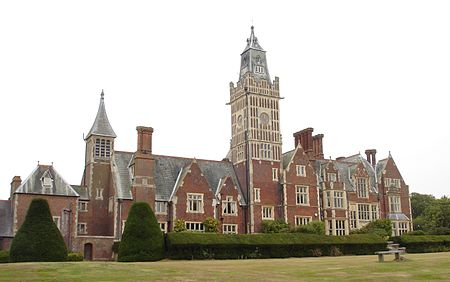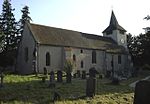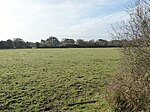Aldermaston Court

Aldermaston Court is a country house and private park built in the Victorian era for Daniel Higford Davall Burr with incorporations from a Stuart house. It is south-east of the village nucleus of Aldermaston in the English county of Berkshire. The predecessor manor house became a mansion from the wealth of its land and from assistance to Charles I during the English Civil War under ownership of the Forster baronets of Aldermaston after which the estate has alternated between the names Aldermaston Park and Aldermaston Manor. The estate became dominated by its neo-Elizabethan mansion after a fire of 1843 destroyed one third of the predecessor and various landscape features were added which have resulted in building and grounds being Grade II* listed. Between the turn of the 21st century and its closure in 2012, the estate has been a wedding venue, a conference centre, and a hotel. Aside from the manor house and its immediate surroundings, the park is home to office buildings and a lake.
Excerpt from the Wikipedia article Aldermaston Court (License: CC BY-SA 3.0, Authors, Images).Aldermaston Court
Red Lane,
Geographical coordinates (GPS) Address Nearby Places Show on map
Geographical coordinates (GPS)
| Latitude | Longitude |
|---|---|
| N 51.379166666667 ° | E -1.1436111111111 ° |
Address
Aldermaston Park
Red Lane
RG7 4PB
England, United Kingdom
Open on Google Maps







